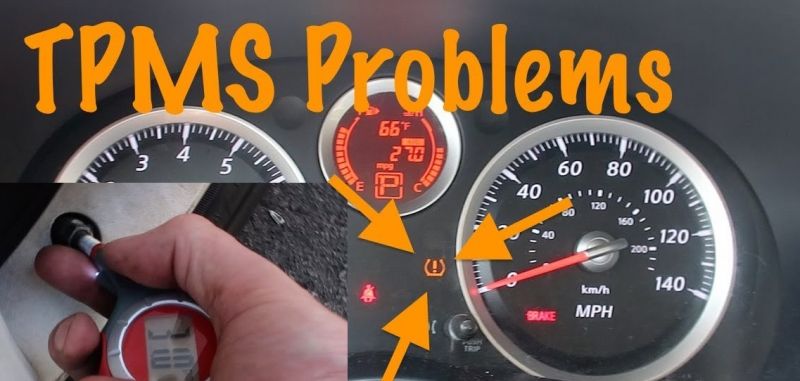As a Nissan owner, you’ve likely encountered the dreaded TPMS (Tire Pressure Monitoring System) error at some point. This warning light indicates an issue with the system responsible for monitoring your tire pressure, which is crucial for safety and fuel efficiency. While a TPMS error may seem daunting, fear not – this comprehensive guide will walk you through the steps to diagnose and fix the problem, ensuring you can hit the road with confidence.

Understanding TPMS Errors
Before we delve into the solutions, let’s first understand what a TPMS error entails. The Tire Pressure Monitoring System is designed to monitor the air pressure in your tires and alert you if any of them falls below the recommended level. A TPMS error can occur due to various reasons, including:
- Low Tire Pressure: The most common cause of a TPMS error is simply low tire pressure, which can be easily remedied by inflating your tires to the correct pressure levels.
- Faulty TPMS Sensors: Each tire has a TPMS sensor that transmits pressure data to the vehicle’s computer. If one or more of these sensors malfunction, it can trigger a TPMS error.
- Dead Sensor Batteries: The TPMS sensors are powered by batteries, which can drain over time and cause the system to malfunction.
- System Faults: In some cases, a TPMS error can be caused by a fault in the system itself, such as a blown fuse or wiring issue.
Step-by-Step Guide to Fixing TPMS Errors
Now that you understand the potential causes, let’s dive into the steps you can take to troubleshoot and fix a TPMS error in your Nissan:
1. Check Tire Pressure
The first and most straightforward step is to check the air pressure in all four tires using a reliable tire pressure gauge. Consult your owner’s manual or the sticker on the driver’s side door jamb for the recommended tire pressure levels specific to your Nissan model.
“I was getting a TPMS error in my Nissan Altima, but after checking the tire pressure and inflating them to the recommended levels, the error went away. It was such a simple fix!” – Alex, Altima Owner
2. Reset the TPMS
Many Nissan models allow you to reset the TPMS system after adjusting the tire pressure. This process varies by model, but it typically involves pressing a button or navigating through the vehicle’s menu system. Refer to your owner’s manual for specific instructions on how to reset the TPMS in your Nissan.
3. Inspect TPMS Sensors
If resetting the TPMS doesn’t resolve the issue, it’s time to inspect the TPMS sensors in each tire. Ensure that the sensors are securely attached to the valve stems and that the valve stems are not damaged or leaking.
4. Replace TPMS Sensors or Batteries
If you find that one or more TPMS sensors are faulty or the batteries have drained, it may be necessary to replace them. TPMS sensors can be replaced individually or as a complete set, depending on your vehicle’s configuration and your personal preference.
5. Check TPMS Fuse
In some cases, a blown fuse can cause a TPMS error. Locate the fuse box in your Nissan and check for any blown fuses related to the TPMS system. Replace any blown fuses with new ones of the correct amperage rating.
6. Seek Professional Assistance
If you’ve tried all of the above steps and the TPMS error persists, it may be time to seek professional assistance from a qualified mechanic or your local Nissan dealership. They have the tools and expertise to diagnose and address any underlying issues with your vehicle’s TPMS system.
Key Takeaways
- TPMS errors in your Nissan can be caused by low tire pressure, faulty sensors, dead sensor batteries, or system faults.
- Check and adjust your tire pressure levels as the first step in troubleshooting a TPMS error.
- Reset the TPMS system after adjusting tire pressure, and inspect the TPMS sensors for any issues.
- Replace faulty TPMS sensors or batteries as needed, and check for any blown fuses related to the TPMS system.
- If the TPMS error persists, seek professional assistance from a qualified mechanic or your local Nissan dealership.
“I was getting frustrated with the constant TPMS error in my Nissan Rogue, but after following the steps in this guide, I was able to identify and replace a faulty sensor. It’s such a relief to have that warning light off and know my tires are properly monitored.” – Sarah, Rogue Owner
Don’t let a TPMS error in your Nissan go unresolved. By following this step-by-step guide, you can diagnose and fix the issue, ensuring your tires are correctly inflated for optimal safety, fuel efficiency, and driving performance.








